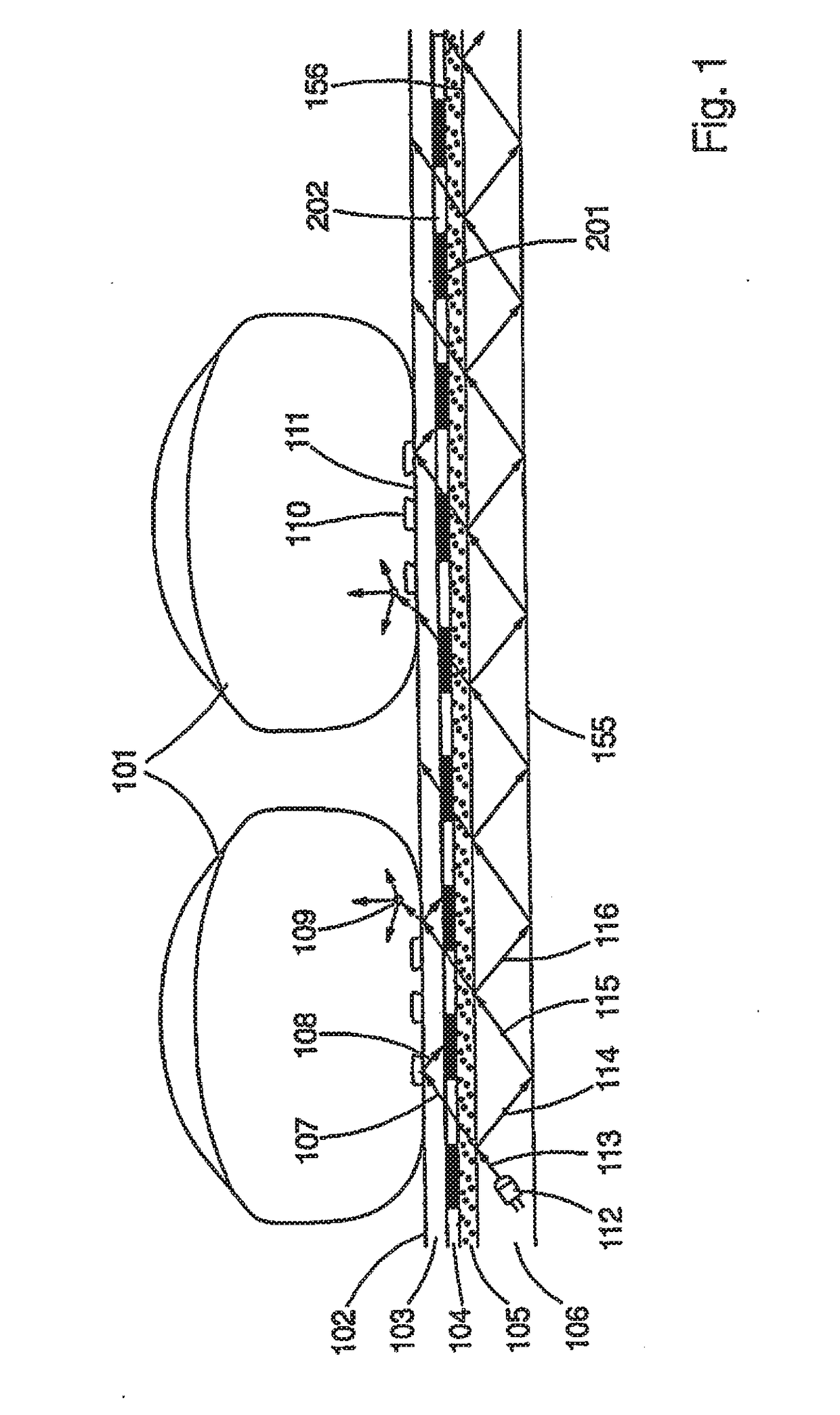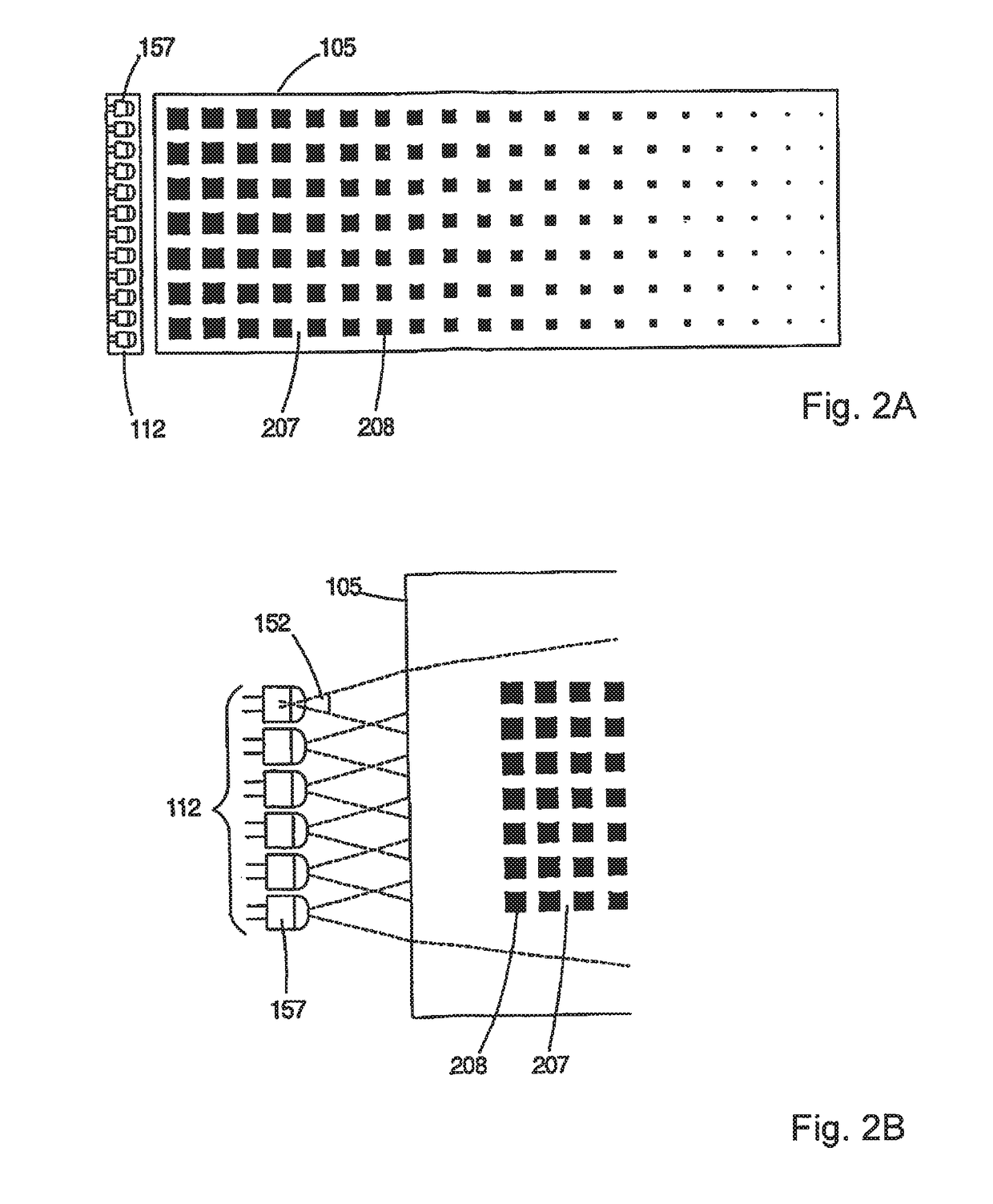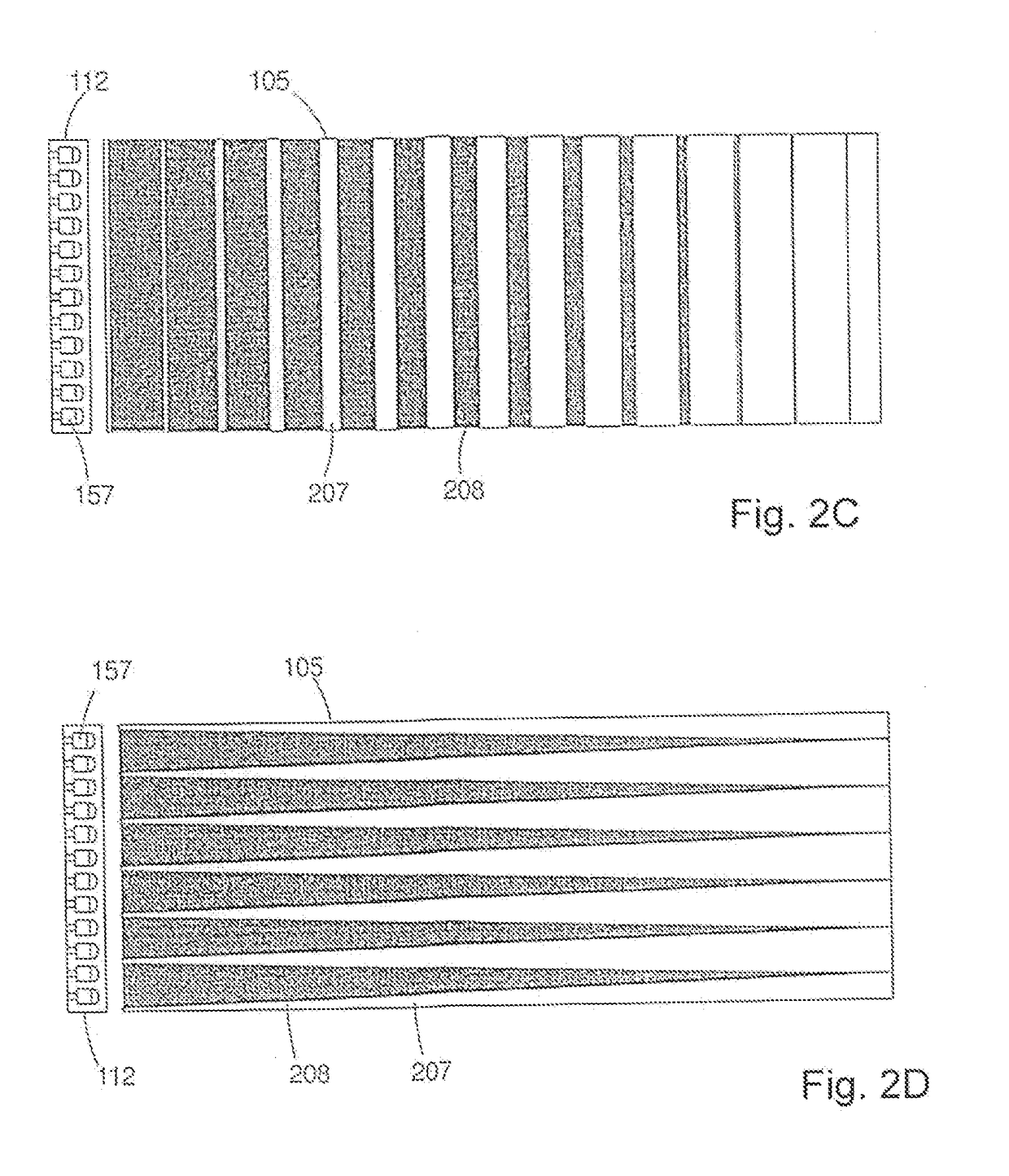Device for the contact-based simultaneous capture of prints of autopodia
a technology of autopodia and contact, applied in the field of devices for can solve the problems of reducing illuminance, requiring the use of complex mechanical components, and requiring calibration and assembly, and achieves the effects of increasing the degree of transmission, high reflectivity, and absorption of the absorption layer
- Summary
- Abstract
- Description
- Claims
- Application Information
AI Technical Summary
Benefits of technology
Problems solved by technology
Method used
Image
Examples
Embodiment Construction
[0061]FIG. 1 shows the basic structure of a device for the contact-based simultaneous capture of prints of several areas of skin of human autopodia supplied with blood, by means of disturbed total internal reflection. A section of the device is shown along the direction in which light is emitted. By way of example here, two fingers 101 as autopodia are placed on a capture surface 102, which forms the closure of a protective body 103 of predefined thickness. The contact surface 102 here has a size which makes possible the simultaneous placement of several autopodia. Seen from the fingers 101, below the protective body 103 a sensor layer 104 is arranged which comprises light-sensitive sensor elements 201, arranged in the form of an array, which are also referred to as pixels in the following. The sensor elements 201 are designed to detect light of at least one predefined wavelength range—which comprises at least one wavelength. Passband areas 202 which are transparent for light of at ...
PUM
 Login to View More
Login to View More Abstract
Description
Claims
Application Information
 Login to View More
Login to View More - R&D
- Intellectual Property
- Life Sciences
- Materials
- Tech Scout
- Unparalleled Data Quality
- Higher Quality Content
- 60% Fewer Hallucinations
Browse by: Latest US Patents, China's latest patents, Technical Efficacy Thesaurus, Application Domain, Technology Topic, Popular Technical Reports.
© 2025 PatSnap. All rights reserved.Legal|Privacy policy|Modern Slavery Act Transparency Statement|Sitemap|About US| Contact US: help@patsnap.com



